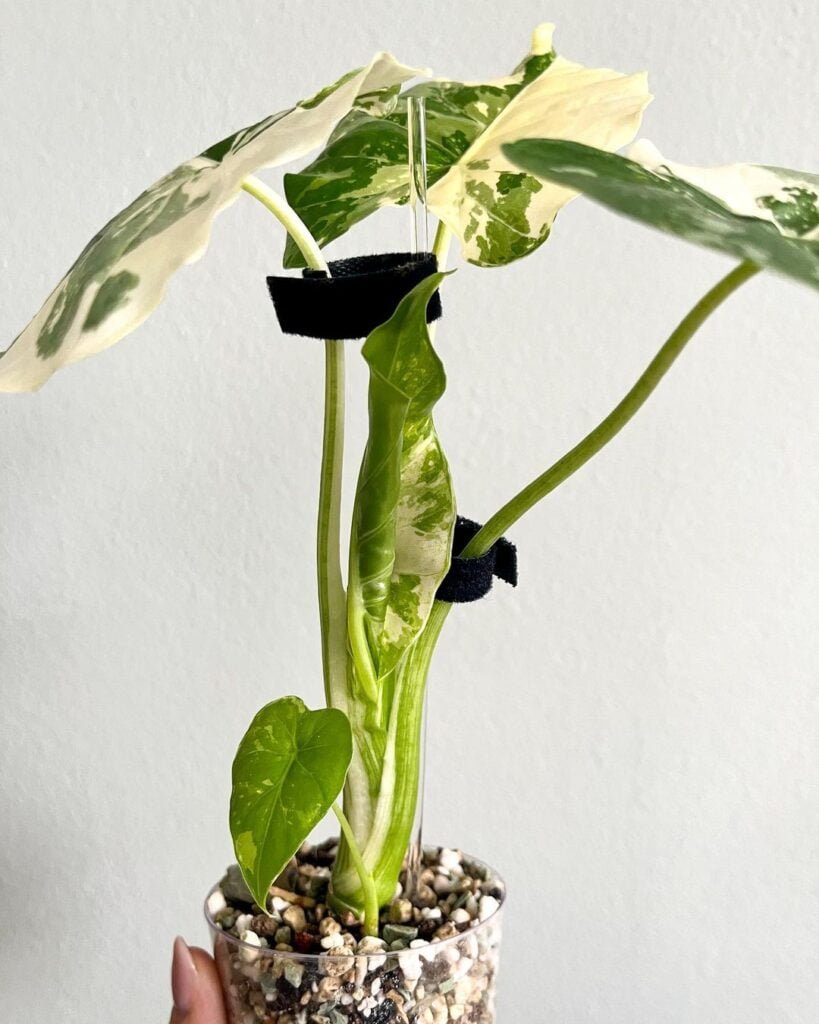Unlock the full potential of the captivating Alocasia Odora, a native plant of Southeast Asia, renowned for its vibrant, tropical foliage. This comprehensive guide delves into the intricacies of Alocasia Odora care, ensuring you cultivate this stunning perennial tropical plant to perfection. Cultivate the mesmerizing beauty of your indoor or outdoor space with the unique and vibrant Alocasia Odora Variegata, adding a touch of tropical allure to your plant collection.
9 Stunning and Rare Anthuriums – Which One Would You Choose?
Alocasia Odora: An Exquisite Overview
Originating from Southeast Asia, Alocasia Odora, also known as the giant upright elephant ear, Asian taro, or night-scented lily, boasts striking, heart-shaped leaves resembling the ear of an elephant. Standing tall on robust stems, each leaf can reach an impressive 2-3 feet in length, showcasing glossy, vibrant green hues. The plant’s allure peaks during late spring and early summer when delicate pale peach-colored spathes and spadices emerge, accompanied by an enchanting fragrance intensifying during the nighttime hours.
7 Rarest Monstera Varieties with Photos
Propagating Alocasia Odora: The Art of Division

Expand your Alocasia Odora collection through effective propagation during the spring and summer seasons. Carefully remove the plant from its pot, preserving tubers for optimal results. Each tuber has the potential to grow into a separate plant, emphasizing the need to keep them isolated. Provide fresh, well-draining soil in new pots, place tubers accordingly, and ensure a warm, humid environment with indirect sunlight. With regular watering, witness the emergence of roots within weeks, giving rise to new, thriving Alocasia Odora plants.
Ficus Villosa – The Definitive Guide For Your Indoor Garden
Requirements for Growing Alocasia Odora

Light
- Alocasia species thrive in shaded conditions.
- For indoor plants, position them near an East-facing window.
- Outdoor planting should consider partial shade or a shade garden.
Soil
- Optimal growth demands rich, moist, and well-draining soil.
- Choose loose soil to prevent excessive moisture retention.
- Incorporate organic matter, peat moss, and perlite.
- Maintain a soil pH between 5.5 to 6.5 for essential nutrient availability.
Water
- Consistently damp soil is crucial, but avoid overwatering to prevent fungal diseases.
- Water when the topsoil feels slightly dry.
- Be vigilant against waterlogged soil, as it may make the plant susceptible to diseases.
Temperature & Humidity
- Maintain a temperature between 65°F (18°C) and 85°F (29°C).
- Increase humidity by clustering plants or using a humidifier, especially during dry winter months.
Japanese Flowering Cherry Bonsai: A Comprehensive Guide
Alocasia Odora Care: Nurturing Your Tropical Beauty

Fertilizer
- Provide high-nutrient balanced liquid fertilizer at 50% concentration every 5-6 weeks.
- Refrain from fertilizing during winter to allow the plant to rest, avoiding excessive fertilization.
Pruning
- Regular pruning involves removing dead or damaged leaves.
- Trim yellow or discolored leaves to maintain plant health.
Pests and Diseases
- Combat common pests with neem oil or insecticidal soap.
- Prevent fungal infections by adhering to proper watering practices, minimizing the risk of diseases.
How to Take Care of Air Plants
Alocasia Odora – Toxicity
Be aware of the plant’s toxicity due to calcium oxalate. Keep it away from children and pets to prevent accidental ingestion.
Incorporate these guidelines, and your Alocasia Odora will flourish, adding an exotic touch to your indoor or outdoor space. Elevate your plant care with our expert insights, ensuring your Alocasia Odora stands out as a pinnacle of tropical beauty.
People Want know about :
Caring for an alocasia odora
variegated alocasia odora
alocasia odora california


Pingback: Alocasia Odora Care: Your Comprehensive Guide |...